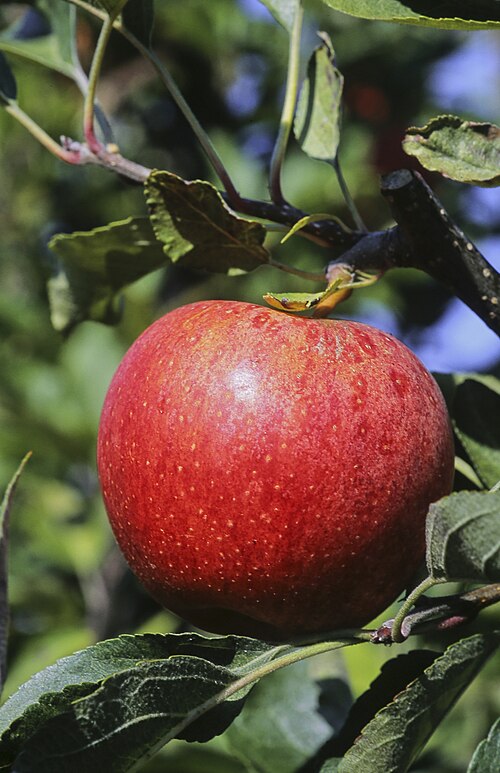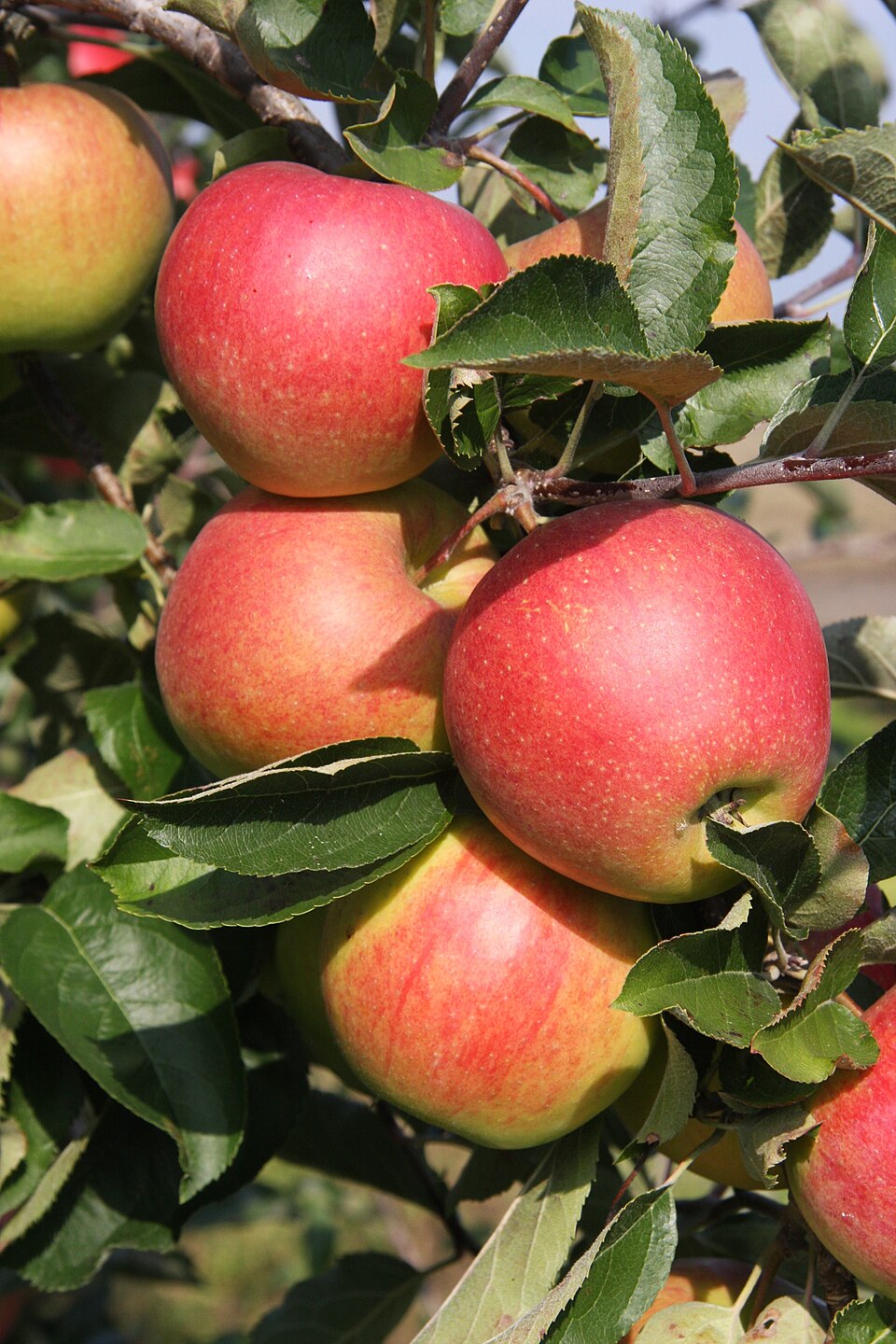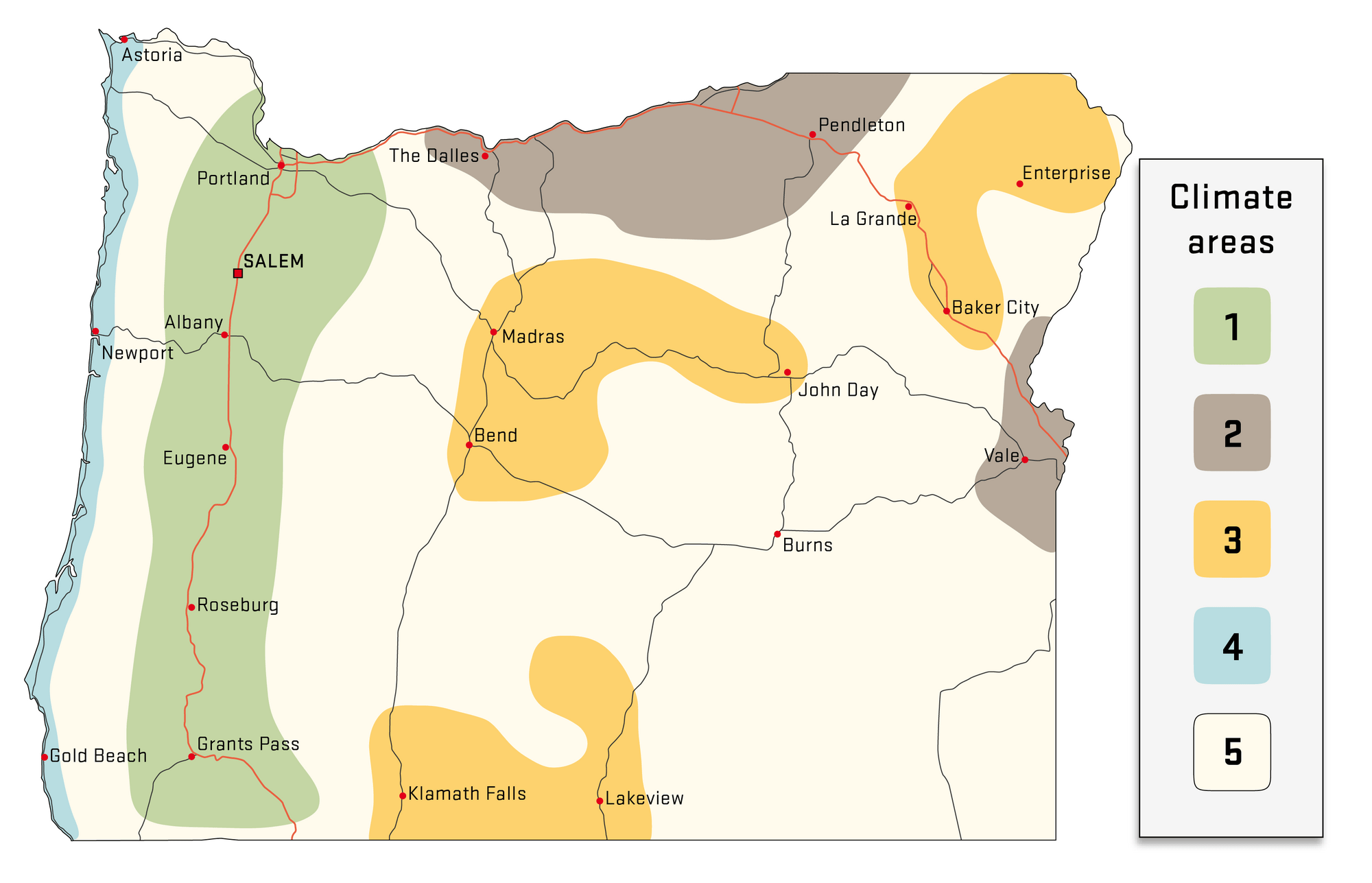Oregon growing areas for fruits are determined largely by climate. Fruit trees may successfully be grown outside of the areas outlined in the area map, but local climate conditions should be considered wherever trees are planted. The climate map and planting recommendations are courtesy of Oregon State Extension Service.

Gala Apple
Lincoln County is in coastal Area 4, and Low summer temperatures and rain limit fruit growing. Choosing apple varieties can be particularly important along the coast.
Further east in Lincoln County (think Eddyville, Tidewater, etc.) the Growing Area is more similar to that of the mid-valley and you will have access to additional varieties.
Below are those varieties that will flourish in at least one of Lincoln County's Growing Areas:
Lincoln County Apples
Variety |
Areas suited |
Approximate time of maturity |
Comments |
|---|---|---|---|
|
Lodi |
1–4 | July | Self-compatiblea; tart, yellow fruit |
|
Earligold |
1–4 | August | Crisp, yellow fruit |
|
Akaneb |
1–4 | August | Self-compatible; crisp, red fruit |
|
Gravenstein |
1, 4 | August | Prefers mild climate; large, flavorful fruit |
|
Chehalisb |
1–4 | September | Self-compatible; fruit are large, yellow, crisp, sweet, and juicy |
|
Elstar |
1, 4 | September | Prefers mild climate; tart, flavorful fruit |
|
Gala |
1–4 | September | Red fruit are sweet, crisp, and juicy; stores well; heat-tolerant |
|
Jonagold |
1, 4 | September | Prefers mild climate; red fruit are sweet, crisp and juicy |
|
Primab |
1–4 | September | Red fruit are crisp and juicy |
|
Empire |
1, 2 | late September | Semi self-compatible; red fruit are sweet and very crisp |
|
Delicious |
1, 2 | late September | Sweet, red fruit; stores well |
|
Libertyb |
1–4 | late September | Red fruit are crisp, sweet and tart |
|
Braeburn |
1, 2 | October | Red fruit are crisp and sweet; stores well; productive |
|
Fuji |
1, 2 | October | Red fruit are very sweet and juicy; stores well |
|
Golden Delicious |
1, 2 | October | Yellow fruit are crisp and juicy; very productive |
|
Granny Smith |
1, 2 | October | Tart, green fruit; stores well |
|
Newtown Pippin |
1, 2 | October | Green to yellow fruit; flavor improves in storage |
Other Considerations
Pollination is necessary for fruit production. Some varieties of apples will require a compatible tree for fertilization. The chart above can help you choose compatible or self-compatible trees.

Jonagold Apple
Apple trees are most productive and healthiest when sited in a location that receives at least six hours of light per day during the growing season. Find the spot likely to receive the most sun in your coastal garden and your trees will thrive.
Even though watering worries are reduced in coastal areas, apples still require regular, even moisture. Water when the top inch of soil is dry and the soil 6 inches below the surface is barely moist. Water deeply enough to ensure penetration down to at least 3 to 4 feet deep. Older trees are more self-sufficient but should still be watered deeply during dry summer periods.
Feed your apple trees three to four times during the growing season with an organic, well-balanced fertilizer. Avoid fertilizers too high in nitrogen, as they stimulate leafy growth at the expense of fruit production. A 2- to 3-inch layer of compost as a top-dressing helps retain water and discourages weeds.
The long term success of your apple trees depend upon initial training and pruning during the first three years. For healthy, productive fruit trees, get tips from your local extension office or follow this OSU home orchard pruning and training guide.

